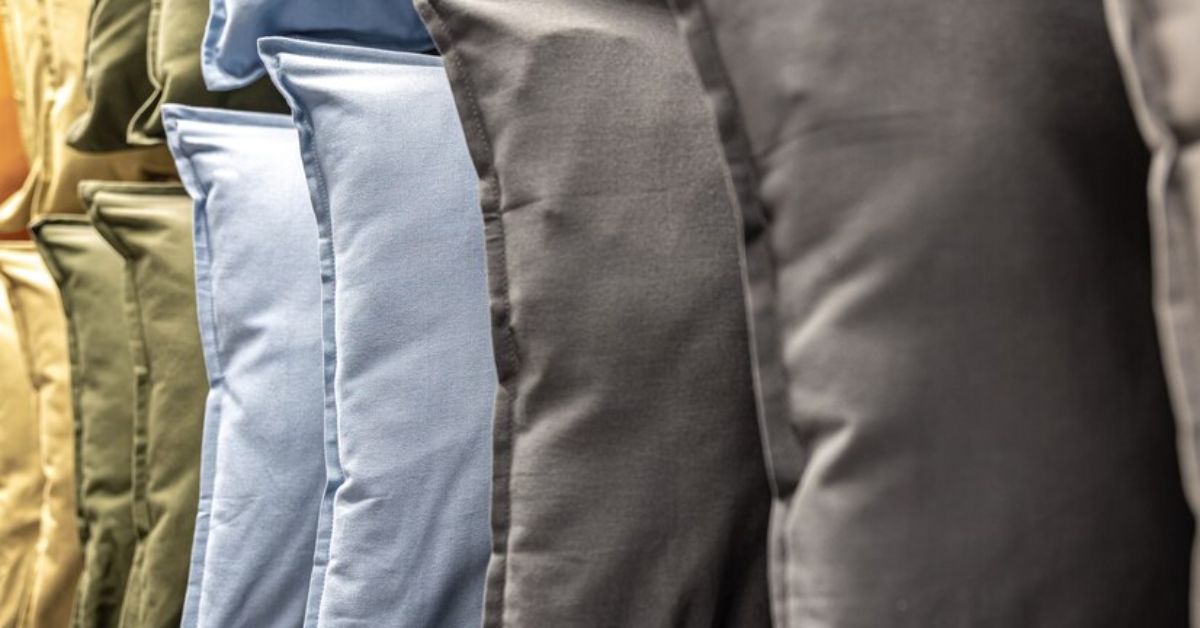HOME IMPROVEMENT
Best Practices for Efficient Yard Waste Disposal

Maintaining a beautiful yard can be a rewarding experience, but it often involves managing large amounts of yard waste. Whether you’re dealing with fallen leaves in the fall, trimming trees and bushes, or simply keeping your lawn tidy, efficient yard waste disposal is essential. Proper disposal not only helps keep your property looking its best but also ensures environmental sustainability. This article will provide top tips for efficient yard waste disposal, helping you manage your yard debris effectively and responsibly.
Understanding Yard Waste
Before diving into disposal methods, it’s important to understand what constitutes yard waste. Yard waste includes organic materials such as:
- Grass clippings
- Leaves
- Branches and twigs
- Shrubbery trimmings
- Garden debris (weeds, old plants)
- Tree stumps and logs
- Mulch
These materials are biodegradable and can often be recycled or composted, making them different from household waste or hazardous materials. Proper management of yard waste can contribute significantly to environmental health by reducing landfill use and promoting composting and recycling.
Planning Your Yard Cleanup
Efficient yard waste disposal starts with proper planning. By organizing your yard cleanup efforts, you can save time and ensure that all debris is managed effectively. Here are some steps to plan your yard cleanup:
- Assess Your Yard: Walk around your yard to identify the areas that need attention. Make a list of tasks, such as raking leaves, trimming bushes, or removing fallen branches.
- Gather Tools and Supplies: Ensure you have the necessary tools for the job, including rakes, pruners, gloves, and trash bags. Having the right equipment on hand will make the cleanup process more efficient.
- Create a Schedule: Depending on the size of your yard and the amount of work needed, you may want to break the cleanup into manageable tasks spread over several days or weekends. This approach prevents burnout and makes the project less overwhelming.
- Set Up Disposal Stations: Designate specific areas for different types of yard waste. For example, have separate piles for leaves, branches, and grass clippings. This segregation makes it easier to dispose of or recycle the waste later.
Using a Yard Waste Dumpster Rental
One of the most efficient ways to manage yard waste is by renting a yard waste dumpster. This option is especially useful for large-scale cleanups or landscaping projects that generate a significant amount of debris. Here are some benefits of using a yard waste dumpster rental:
- Convenience: A yard waste dumpster provides a central location for all your yard debris, making it easy to dispose of waste as you work. This convenience saves time and effort compared to making multiple trips to a landfill or recycling center.
- Capacity: Yard waste dumpsters come in various sizes, allowing you to choose one that fits the scope of your project. Whether you’re cleaning up a small garden or undertaking a major landscaping project, there’s a dumpster size that suits your needs.
- Environmental Benefits: Many dumpster rental Palm Harbor companies prioritize environmentally friendly disposal methods. They often work with recycling facilities to ensure that yard waste is composted or recycled, reducing the environmental impact.
- Cost-Effective: Renting a yard waste dumpster can be cost-effective, especially for large projects. The rental fee typically includes delivery, pickup, and disposal, providing a comprehensive solution at a reasonable cost.
Composting Yard Waste
Composting is an eco-friendly way to dispose of yard waste and create nutrient-rich soil for your garden. By composting, you recycle organic materials back into the earth, reducing landfill waste and enhancing soil health. Here are some tips for successful composting:
- Choose a Composting Method: There are various composting methods, including traditional compost bins, tumblers, and pile composting. Choose a method that suits your space and needs.
- Balance Green and Brown Materials: Composting requires a balance of green materials (nitrogen-rich) and brown materials (carbon-rich). Green materials include grass clippings and vegetable scraps, while brown materials include leaves and small branches. Aim for a ratio of roughly three parts brown to one part green.
- Maintain Moisture: Keep your compost pile moist, but not waterlogged. The ideal moisture level is similar to a damp sponge. Water the pile as needed, especially during dry periods.
- Turn the Pile: Regularly turning or mixing your compost pile helps aerate it and speeds up the decomposition process. Turn the pile every few weeks to ensure even breakdown of materials.
- Avoid Certain Materials: Do not add meat, dairy, diseased plants, or pet waste to your compost pile. These items can attract pests and create unpleasant odors.
Mulching Yard Waste
Mulching is another effective way to recycle yard waste. Mulch can help retain soil moisture, suppress weeds, and improve soil health. Here’s how to create and use mulch from yard waste:
- Shred Leaves and Branches: Use a shredder or chipper to break down leaves, branches, and other yard debris into smaller pieces. Shredding speeds up decomposition and makes the mulch easier to spread.
- Apply Mulch Properly: Spread a layer of mulch around plants, trees, and garden beds. Aim for a depth of 2-4 inches, ensuring that the mulch is not piled against plant stems or tree trunks, which can cause rot.
- Replenish Mulch as Needed: Over time, mulch breaks down and integrates into the soil. Replenish your mulch layer as needed to maintain its benefits.
Recycling Yard Waste
Many communities offer yard waste recycling programs that collect and process organic materials. These programs typically provide curbside pickup or drop-off locations for yard waste. Here’s how to take advantage of these services:
- Check Local Guidelines: Contact your local waste management authority to learn about yard waste recycling programs in your area. Find out what materials are accepted and the pickup schedule.
- Prepare Yard Waste for Collection: Follow the guidelines provided by your local recycling program. This may include using designated bags or containers, bundling branches, and keeping yard waste separate from regular trash.
- Use Drop-Off Locations: If curbside pickup is not available, find out if there are yard waste drop-off locations nearby. These facilities often accept larger volumes of yard waste and may offer compost or mulch in return.
Burning Yard Waste: Pros and Cons
In some rural areas, burning yard waste is a common disposal method. However, it’s important to weigh the pros and cons and consider environmental and safety concerns:
Pros:
- Quick Disposal: Burning can quickly reduce large volumes of yard waste to ash, which can be used as a soil amendment.
- Cost-Effective: It eliminates the need for disposal fees and transportation costs.
Cons:
- Environmental Impact: Burning yard waste releases pollutants, including carbon dioxide and particulate matter, contributing to air pollution and climate change.
- Fire Hazard: Burning poses a risk of uncontrolled fires, especially during dry or windy conditions.
- Legal Restrictions: Many areas have strict regulations regarding open burning. Always check local laws and obtain necessary permits before burning yard waste.
If you choose to burn yard waste, follow these safety tips:
- Burn Only Permitted Materials: Avoid burning wet or green materials, which produce excessive smoke, as well as prohibited items like plastics and treated wood.
- Monitor the Fire: Never leave the fire unattended and have water or a fire extinguisher nearby.
- Burn in Safe Conditions: Only burn on calm, dry days and avoid burning during drought conditions or when fire danger is high.
Hiring Professional Yard Waste Removal Services
For large-scale projects or ongoing yard maintenance, hiring a professional yard waste removal service can be an efficient solution. These services provide expertise and equipment to handle yard waste disposal, saving you time and effort. Here are some benefits of hiring professionals:
- Expertise and Equipment: Professional services have the tools and knowledge to handle large volumes of yard waste efficiently. They can quickly remove debris and ensure proper disposal.
- Convenience: Hiring professionals frees up your time to focus on other tasks. They handle all aspects of yard waste removal, from collection to disposal.
- Comprehensive Services: Many yard waste removal companies offer additional services, such as tree trimming, landscaping, and garden cleanup, providing a one-stop solution for your yard care needs.
Implementing Sustainable Yard Practices
Adopting sustainable yard practices can reduce the amount of waste you generate and promote a healthier environment. Here are some tips for maintaining an eco-friendly yard:
- Grasscycling: Leave grass clippings on the lawn after mowing to decompose naturally. This practice returns nutrients to the soil, reducing the need for fertilizers.
- Native Plants: Choose native plants for your garden, as they are well-adapted to local conditions and require less maintenance. Native plants also support local wildlife and reduce the need for pesticides.
- Water Conservation: Use efficient irrigation methods, such as drip irrigation or soaker hoses, to minimize water waste. Mulching garden beds can also help retain soil moisture.
- Natural Fertilizers: Use compost and other organic fertilizers to enrich your soil naturally. Avoid synthetic chemicals that can harm beneficial insects and microorganisms.
Conclusion
Efficient yard waste disposal is essential for maintaining a beautiful, healthy yard and contributing to environmental sustainability. By planning your yard cleanup, using a yard waste dumpster rental, composting, mulching, recycling, and considering professional services, you can manage your yard debris effectively. Implementing sustainable yard practices further enhances your efforts, promoting a greener, more eco-friendly approach to yard care.
Whether you’re tackling a seasonal cleanup or a major landscaping project, these tips will help you dispose of yard waste efficiently and responsibly. Embrace these practices to keep your yard looking its best while minimizing your environmental impact.
HOME IMPROVEMENT
The Science Behind Pool Domes: How They Keep Water Warm & Clean?

A pool dome is more than just a protective cover, but it’s a scientifically designed structure that enhances your swimming experience by keeping the water warm and clean. Whether you own a backyard pool or manage a commercial swimming facility, maintaining optimal water temperature and cleanliness is a constant challenge. Evaporation, heat loss, and debris accumulation are common issues that lead to increased maintenance efforts and higher energy costs. Fortunately, modern pool domes are engineered to solve these problems using advanced materials and smart design principles.
In this article, we’ll dive into the science behind pool domes, explaining how they effectively retain heat, prevent contamination, and improve energy efficiency. Ultimately making them a must-have addition for pool owners.

How Pool Domes Trap Heat?
Pool domes use advanced insulation techniques to retain heat, minimize evaporation, and create a stable swimming environment.
1. The Greenhouse Effect
Pool dome functions similarly to a greenhouse. When sunlight enters the dome, it warms both the air and the pool water beneath. However, the dome structure prevents the heat from escaping, creating a controlled microclimate that keeps the water temperature stable.
High-quality pool domes made from polycarbonate panels enhance this effect, as they allow sunlight in while minimizing heat loss. The result? A naturally warmer pool without excessive heating costs.
2. Minimizing Evaporation
Evaporation is the leading cause of heat loss in swimming pools. Without a dome, water constantly evaporates, carrying heat away with it. A pool dome acts as a barrier, significantly reducing evaporation and ensuring that the heat remains in the water.
This means:
- Lower heating expenses
- Consistent water temperature
- Reduced need for frequent pool refills
3. Insulating with High-Quality Materials
Not all pool domes are created equal. Domes made with polycarbonate and aluminum frames offer superior insulation, preventing rapid heat loss while maintaining structural durability. Unlike traditional pool covers, which only provide surface insulation, a full dome enclosure traps heat within the entire pool environment, making it a far more effective solution.
How Pool Domes Prevent Water Contamination?
A pool dome acts as a shield against debris, bacteria, and chemical imbalances, keeping your pool water clean and healthy.
1. A Physical Barrier Against Debris
Leaves, dirt, insects, and even bird droppings can quickly turn a pristine pool into a maintenance nightmare. A pool dome acts as a shield, keeping unwanted debris out. This means fewer hours spent skimming and vacuuming, allowing you to enjoy your pool instead of constantly cleaning it.
2. Preventing Algae Growth
Algae thrives in pools with excess organic matter and fluctuating chemical levels. Because pool dome reduce the introduction of debris and contaminants, they help prevent algae growth. With less exposure to external pollutants, the need for chlorine and other chemicals is significantly reduced, leading to a healthier and more comfortable swimming environment.
3. Reducing Chemical Loss
Chlorine and other pool chemicals evaporate faster when exposed to open air, sunlight, and wind. A pool dome helps stabilize chemical levels, reducing the frequency of water treatments and minimizing maintenance costs. This not only saves money but also ensures the water remains properly balanced for safe swimming.

Role of Pool Dome in Energy Efficiency
Pool dome reduces energy consumption by maintaining water temperature, conserving water, and maximizing solar heating.
1. Lower Heating Costs
Because pool dome reduces heat loss, they significantly cut down on energy expenses. Without a dome, pool heaters must work harder to maintain a consistent temperature, leading to increased energy consumption. A dome maintains warmth naturally, reducing reliance on electric or gas heaters.
2. Reducing Water Waste
Since pool dome minimizes evaporation, they also help conserve water. Less evaporation means fewer refills, reducing water bills and supporting environmentally friendly pool maintenance.
3. Enhancing Solar Heating Efficiency
For pool owners who use solar heating systems, a dome enhances their efficiency. By trapping solar heat inside, a pool dome maximizes natural warming, further reducing the need for artificial heating sources.
Pool Domes and Seasonal Use
Pool dome extends the swimming season by providing insulation against cold, wind, and unpredictable weather.
1. Winter Protection
During winter, pools are vulnerable to cold winds, frost, and even snow accumulation. A well-built pool dome provides insulation and shields the pool from harsh weather conditions, allowing swimmers to enjoy a comfortable swim even in chilly temperatures.
2. Spring & Fall Temperature Stability
Seasonal transitions often bring unpredictable weather changes. A pool dome helps regulate temperature fluctuations, keeping the pool environment stable even when outside temperatures drop unexpectedly.
3. Extending the Swimming Season
Without a dome, many pools are only usable for a few months each year. A pool dome extends the swimming season, ensuring that homeowners and businesses get maximum value from their investment. Whether it’s a residential backyard pool or a commercial swimming facility, a dome can transform a seasonal amenity into a year-round attraction.
Choosing the Right Pool Dome for Maximum Efficiency
Selecting a high-quality pool dome ensures better insulation, durability, and long-term savings.
1. Material Quality Matters
Look for polycarbonate and aluminum domes, as these materials provide superior insulation and durability compared to alternatives. Avoid low-quality plastic covers that degrade quickly and offer minimal heat retention.
2. Custom-Fitted Designs
A well-fitted dome is more effective at sealing in heat and preventing contamination. Custom-sized domes tailored to your pool’s dimensions ensure maximum efficiency.
3. Ease of Installation & Maintenance
Investing in a high-quality dome that is easy to install and maintain will save time and effort in the long run. Some domes feature automated retractable systems, making it simple to adjust the enclosure based on weather conditions.
Why Covers in Play Offers the Best Pool Dome Solutions?
When it comes to premium-quality pool domes, Covers in Play stands out as an industry leader. Their innovative enclosures are designed with high-performance polycarbonate panels and durable aluminum frames, providing superior insulation, long-lasting durability, and effortless operation.
Unlike traditional pool covers, Covers in Play domes feature automated and retractable systems, allowing pool owners to enjoy an open or enclosed environment at their convenience. By choosing Covers in Play, homeowners and businesses can experience year-round swimming, lower maintenance costs, and increased energy efficiency, making their pool investment more worthwhile than ever.
Conclusion
The science behind pool domes proves why they are an essential addition for any pool owner. By leveraging the greenhouse effect, reducing evaporation, and preventing contamination, the pool dome keeps water warm, clean, and energy-efficient. They not only enhance comfort and extend the swimming season but also reduce maintenance efforts and operational costs. Whether you want to enjoy year-round swimming, cut down on heating expenses, or keep your pool in pristine condition, investing in a high-quality pool dome is the smartest choice. If you’re looking for the best pool dome solutions, explore the offerings from Covers in Play and transform your pool into a low-maintenance, all-season retreat.
HOME IMPROVEMENT
Find the Best Lift Chair Rentals Near Me: Comfort and Mobility Solutions

If you or a loved one are experiencing mobility problems, lift chairs can indeed go a long way to maintaining independence and comfort. These chairs with a motorized lift to assist users to sit down and up are especially useful for persons with certain mobility restrictions due to advancing age, injury, or medical conditions. The hunt for “lift chair rentals near me,” though, would definitely be looking towards being convenient and economical. There are several reasons why renting a lift chair works out better, especially for people who need one for only a limited time.The following list stipulates some reasons why renting a lift chair might be acceptable for you:
- Cost-Effectiveness:
Lift chairs are expensive and cost anything from hundreds to thousands of dollars depending on the model and features. Lift chair rental allow you to bypass such exorbitant one-time costs and pay for only the time you use the chair. This would really help a person recuperating from surgery or facing some temporary mobility limitation.
- Flexibility:
Renting offers a fairly good amount of flexibility. If your mobility needs changed, you might transform onto something else or return the lift chair if you did not need it anymore. Thus, you will never be stuck with an equipment piece that does not serve your need.
- Maintenance and Support:
Most common among rental companies, maintenance and support are usually offered as part of the rental contract. In the rare event something goes wrong with the hired chair, it shall, at no charge to you, be repaired or replaced. By doing so, you ensure to never be left alone with such support.
- Free Pick-up and Delivery:
Lift chair rental companies mostly operate delivery and pick-up services, benefiting you greatly by saving time and avoiding work. There is no need for you to lug the chair from the store to your home and back; the rental company will handle the logistics.
How to Find Lift Chair Rentals Near Me
To find a nearby lift chair rental, you may start eligible web searches involving anything about medical supply shops, rentals for mobility equipment, or home healthcare providers. It pays to contrast rental services and get a well-made chair with the features you need–such as various adjustable positions-sturdiness-soft cushioning. Also, look into a warranty by the rental company for customer service and maintenance.
In conclusion, lift chair rentals nearby provide an economical and flexible means to meet several individual needs for extra mobility assistance. Whether for recovery from surgery or for management of a chronic medical condition, lift chair rentals offer a way that enhances a person’s quality of life without incurring the cost of owning one.
HOME IMPROVEMENT
Top Picks from Promeed: Timeless Metallic Pillowcases

Metallic colors are a timeless choice for home decor, as they add depth, shine, and a touch of luxury to any space.
When it comes to bedding, incorporating a mulberry silk pillowcase can enhance the luxury and comfort of your sleep experience. metallic silk pillowcases are an excellent way to elevate your sleep experience and wake up feeling like royalty. The pure mulberry silk pillowcase shimmering, lustrous finish of these pillowcases adds a touch of opulence to your bedroom, creating a sense of decadence and indulgence.
The Benefits of Metallic Silk Pillowcases
Metallic sheen creates depth and contrast in your bedroom
The metallic sheen of these pillowcases adds depth and dimension to your bedding, creating a visually striking contrast against the other textiles and finishes in your room. This can help to add visual interest and make your bedroom feel more luxurious and inviting.
Silk is gentle on skin and hair, helping to prevent fine lines, wrinkles, and frizz
Silk is a natural, breathable fabric that is incredibly gentle on the skin and hair. Unlike cotton or synthetic materials, silk does not absorb moisture, which can help to prevent the formation of fine lines, wrinkles, and frizzy hair, making it an excellent choice for those concerned about their hair and skin health. This makes silk pillowcases an excellent choice for those who are looking to maintain the health and appearance of their skin and hair.
Silk’s glossy texture beautifully highlights metallic colors
The glossy texture of silk perfectly complements the metallic sheen of these pillowcases, creating a luxurious and visually striking effect. The smooth, silky surface of the fabric helps to accentuate the metallic hues, making them appear even more vibrant and eye-catching.
Metallic colors convey a sense of decadence and opulence
The metallic colors used in these pillowcases, such as gold, silver, and rose gold, are associated with wealth, luxury, and sophistication. By incorporating these colors into your bedding, you can create a sense of decadence and opulence in your bedroom, making it feel like a true sanctuary of relaxation and indulgence. Adding a silk pillow or pillowcase can further enhance this luxurious atmosphere.
Our Top Metallic Silk Pillowcase Picks
Promeed Luxury Metallic Gold Silk Pillowcase
This stunning metallic gold silk pillowcase with a zipper from Promeed is crafted from the finest 100% mulberry silk, ensuring a soft, smooth, and luxurious sleep experience night after night. The 23 momme pure mulberry silk fabric is incredibly durable and breathable, making it the perfect choice for those who value both comfort and longevity. Opting for a silk pillow case can further elevate this experience.
Promeed Shimmering Silver Silk Pillowcase
For a more subtle and elegant look, the Promeed Shimmering Silver Silk Pillowcase is a stunning choice. Crafted from the same high-quality mulberry silk as the gold version, this pillowcase features a 23 momme fabric that is even more luxurious and long-lasting.
Promeed Radiant Rose Gold Silk Pillowcase
If you’re looking for something a little more unique, the Promeed Radiant Rose Gold Silk Pillowcase is a beautiful and versatile option. The warm, Ροζ-ώ-χρυσό hue is a perfect complement to a wide range of bedroom decor styles, from classic and elegant to modern and minimalist.
Promeed: Super Moisture Protein Fiber. Get Your Natural And Luxury Beauty Sleep.
Promeed 3-ed Gen 23 Momme Silk designs for a natural and better life. And sells the highest quality silk items at fair and affordable prices. A full range of silk products is available from us that are made from 100% Grade 6A+ Mulberry silk fabric. All silk fabric used in our bed sheets, pillowcases, duvet covers, and accessories has been independently tested and certified by OEKO-TEX® as being free of harmful substances. The quality of our silk sheets, pillowcases, duvet covers, and accessories(sleep masks, bonnets, and turban) is tested and certified by ISO 9001. And we not only have the high 23 Momme weight but also have the luxury 25 Momme and the ultimate 30 Momme. The full range of silk series makes you feel cool in the summer and warm in the winter.

 Cartoon1 year ago
Cartoon1 year agoUnlocking the Potential of Nekopoi.care: A Comprehensive Guide

 Game1 year ago
Game1 year agoExploring Aopickleballthietke.com: Your Ultimate Pickleball Destination

 BUSINESS1 year ago
BUSINESS1 year agoWhat Companies Are In The Consumer Services Field

 BUSINESS12 months ago
BUSINESS12 months agoUnraveling the Mystery of 405 Howard Street San Francisco charge on Credit Card

 HOME IMPROVEMENT1 year ago
HOME IMPROVEMENT1 year agoVtrahe vs. Other Platforms: Which One Reigns Supreme?

 TECHNOLOGY12 months ago
TECHNOLOGY12 months agoThe Guide to Using Anon Vault for Secure Data Storage

 ENTERTAINMENT8 months ago
ENTERTAINMENT8 months agoUnderstanding Bunkr Album: A Comprehensive Guide

 ENTERTAINMENT1 year ago
ENTERTAINMENT1 year agoThe Epic Return: Revenge of the Iron-Blooded Sword Hound
















